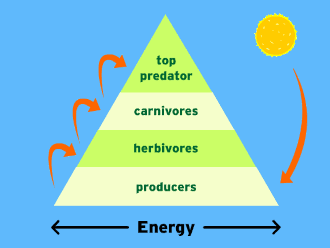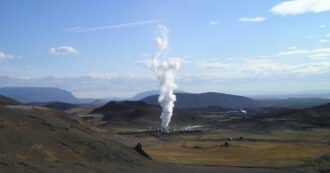By Sydney Cohen – The ecological pyramid is a graphical representation of living organisms in an ecosystem’s food chain, providing a way to look at the relationship between different levels of organisms in an ecosystem. As far back as the ancient Egyptians, humanity has utilized pyramids. Today as well, pyramids are a useful tool for communicating and understanding hierarchical data.
The Importance of The Ecological Pyramid Modal
It shows how the number and variety of life change as it moves up through different layers, with plants and animals on the bottom level, followed by predators, herbivores, omnivores, and finally at the top, the predators.
Different Forms of The Ecological Model
This model comes in many forms, such as an upright pyramid, an inverted pyramid, and even a pyramid of numbers that displays the amount of energy or flow of energy through the pyramid. This structure has been used for many years to help us understand how ecosystems work.
A Variety of Ecological Pyramids
Biodiversity is the number of individuals of different species that exist in a particular ecosystem. An ecosystem is defined by a community combining both living and not living entities and interacting with each other. The different levels of biodiversity in the ecological pyramid are called trophic.
Organisms that use sunlight to make their own meals are called primary producers. The next trophic level contains the consumers that consume the primary producers – they are sorted into primary and secondary categories. Primary producers feed primary consumers and secondary consumers, while secondary consumers feed third-level or tertiary consumers.
At the top of the pyramid are the apex predators, such as lions in a jungle ecosystem, where they are the highest up on the food chain.
The Trophic Ecological Pyramid
There are different types of ecological pyramids. The trophic pyramid is composed of various levels the lowest one being the autotrophic level, or species that do not rely on a source of energy other than sunlight. These species are most important in the ecosystem and are at the base of the pyramid. All other organisms in the ecosystem are consumers called heterotrophs.
In this context, plants rely on a fraction of the enormous amount of solar energy their resources produce to generate food. Herbs and detritivores (primary consumers) take less available energy because they have limited biomass. This implies that carnivorous animals feed on herbivores.
The Ecological Pyramid of Biomass
Another pyramid is the pyramid of biomass, which, at different trophic levels, contains the number of organisms, organic matter, and biomass per individual area.
The pyramid of biomass is generally achieved by collecting each living organism separately at the trophic level and measuring its dry mass. Then, the pyramid is drawn between the producer at the base and the top carnivore at the tip.
It is drawn so that producers and carnivores are found at the bottom of the pyramid and the top prey on each pyramid. ‘Biomass pyramids’ are commonly known as pyramids showing the number of living species.
The Ecological Pyramid of Energy
The pyramid of energy demonstrates the energy from the sun that an ecological pyramid of species requires. Energy from the sun is the primary source of electricity, as plants and animals at the bottom of the ecological pyramid food chain use the most.
The energy pyramid always holds the sun and decomposed nutrients such as bacteria and fungi.
The Function of Ecological Pyramids
The ecological pyramid tells us about the feeding of different organisms in various environments. It can also help to understand the efficiency of energy transfers. A further example is the impact of trophic level change on the levels above and below.
The Ecological Pyramid Reflects Environmental Conditions
In addition to collected data over the years, studies on organisms can be undertaken for changes in the environment through the comparison of this data. When conditions of ecosystems in an environment are found to be deteriorating due to pollution or human overhunting then action can be taken to prevent further damage and possibly reverse some of the present damage.
Understanding the different layers of an ecological pyramid is important for understanding how our world works. The energy and food chains are essential to understand because they can tell us about a species’ habitat, niche, or ecosystem.
* Featured image source
Follow this link to learn more about Ecological Balance







